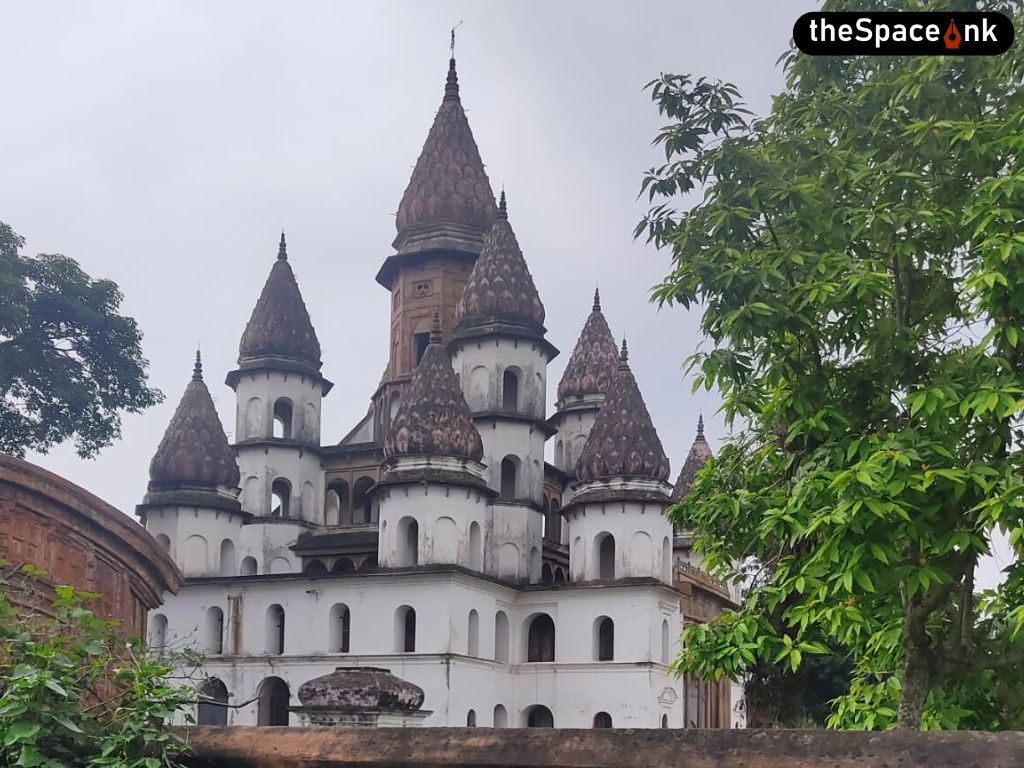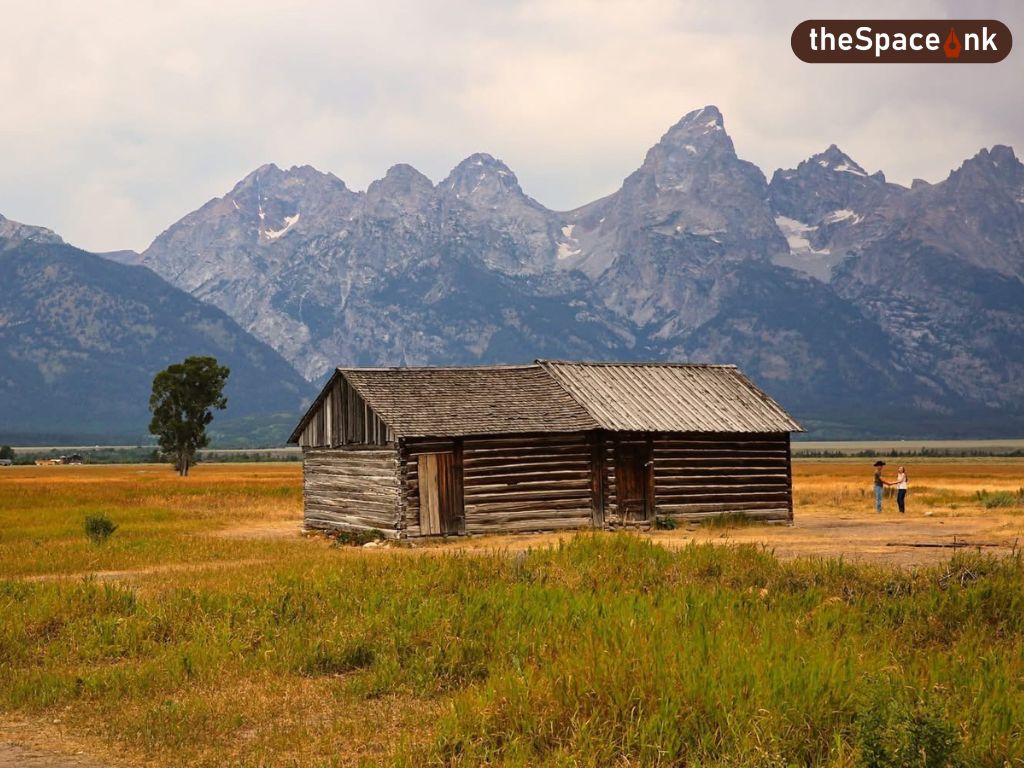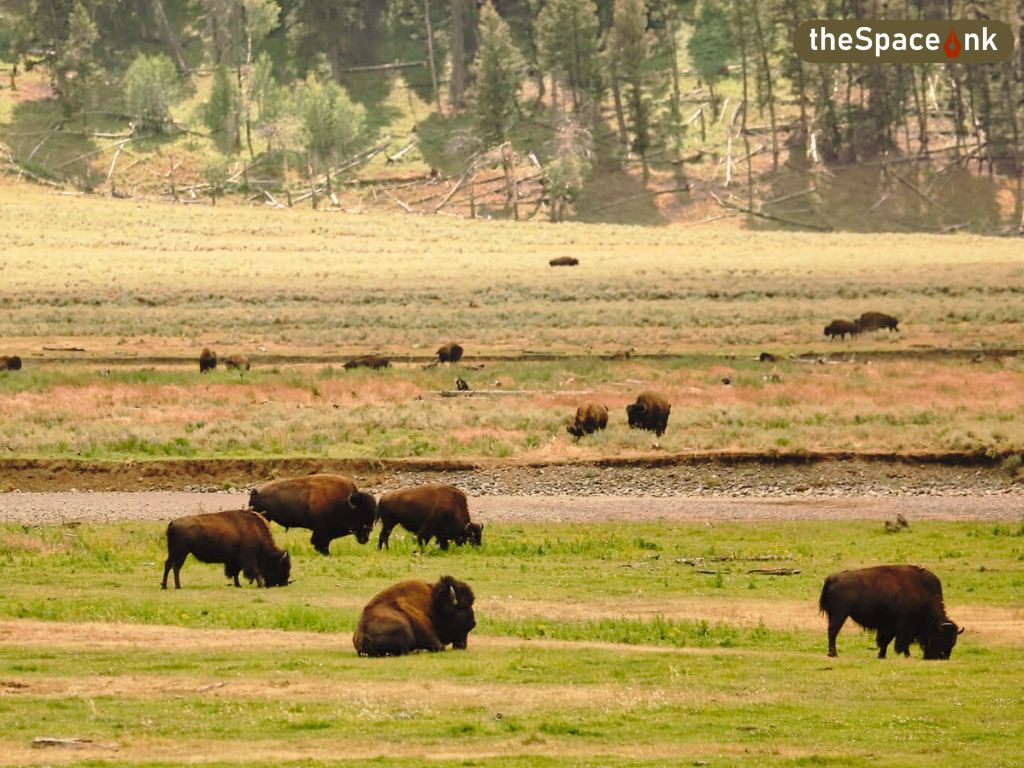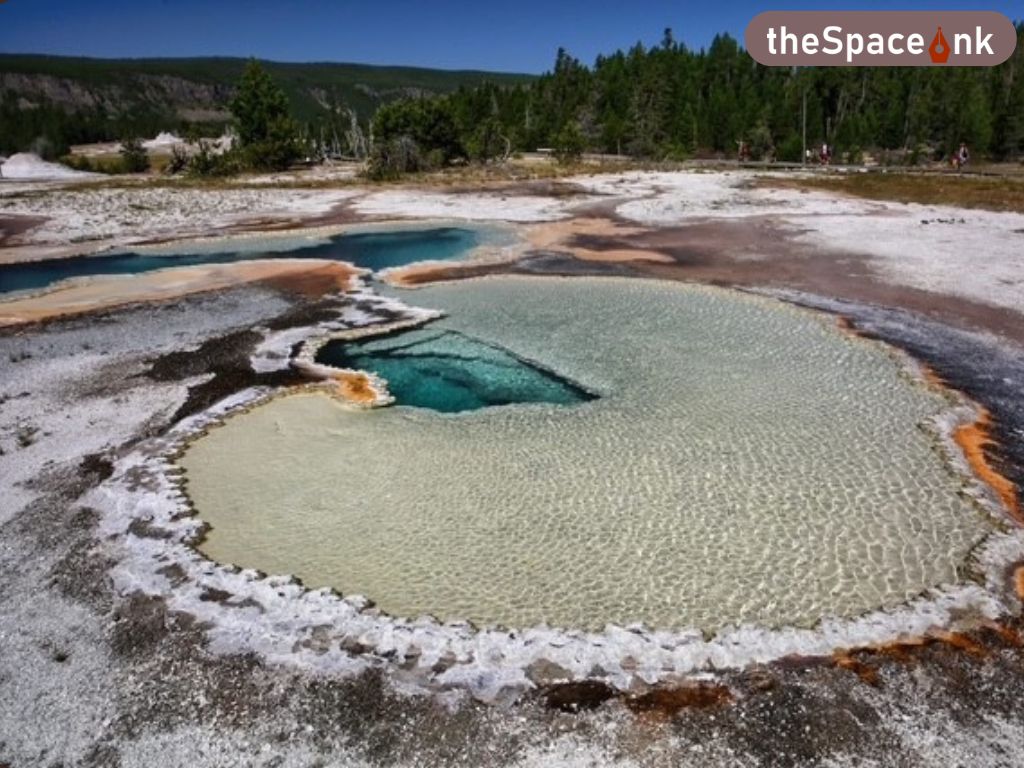While decoding Dhotrey, I could trace an innocent charm in this earthy hamlet in the lap of the Himalayas in North Bengal. Now it’s time to unfold the handkerchief and let the fragrance spread like a gentle summer breeze. The feel-good memories are adorned with the rhetorical snow capped mountains, skyscraping pine trees, chirping birds, serpentine wooded roads and starry nights. And I kid you not that even a clumsy one can settle down here to meditate in this lush green landscape.
Hearing a light footfall behind me I turned to find the owner of the home-stay, Padma. Her round fair hard face and misty eyes were enough to introduce the young but wise entrepreneur. “Aiye ji”, she said with a tough yet soft voice and a cordial welcome smile. Her husband, Gyalje, meanwhile carried my luggage upstairs. Following his footsteps I went to my allotted room. As I opened the door of the verandah the cold air burst into the scene to draw a bridge between me and the Himalayas.

As I stood facing the mountains and remained mesmerized by the magic charm of Mt. Kanchenjunga and her fellow mates, somebody knocked at the door. It was Padma, with her smile and a transparent cup of aromatic Darjeeling tea. I conveyed my thanks to her for the entire ambience. She was followed by her pampered dog which wagged its tail in reciprocation on behalf of its master.
Also read: Untold Kashmir: Trekking to the Great Lakes
I told her about my first admiration for this place when a few years ago on my way back from Sandakphu trek I had a momo-stop here. In search of a virgin destination, a tide of tourism had swept away the sleepiness of this wayside village. New lodges had appeared. She admitted and added that her homestay has overcome many hurdles and it’s truly difficult to flourish for a woman. The only belief ‘I can’ is the testament in the journey.

Shortly after finishing the tea I came downstairs in the dining room adjacent to the kitchen. Padma was very busy instructing others. She looked at me with her arresting smile and spoke in Hindi with a Nepali accent and introduced her relatives. Her brother, sister and in-laws all work together to run this homestay. Meanwhile Gyalje brought me a plate of piping hot soft and succulent vegetable momos (steamed stuffed dumplings) and Padma added, ‘Not only I but the whole village believes in doing. Few years back around thirty houses were burnt down but with the help of forest department and NGOs and of course with that supporting zeal not to give up, we are back.’
I looked outside. Harvesting lands were the canvas of the dining window. And then the slope went down into the jungle.
– Are there poisonous snakes in the forest? I asked.
-Could be, but I haven’t met any, said Gyalje.
-Poisonous snakes or venomous insects may be present but if you don’t harm those the jungle has no intention to harm you, added Padma.
She chuckled and added, ‘Once my father met with a raato panda (Red Panda) while collecting twigs. He was amazed to see such a fiery red cat but the animal was quite afraid to see him and started climbing up. We humans are much bewildering to them’.

I went out for a village trot and the pet followed me. The roadside asters nodded charmingly as if all the princesses were out to play in the royal courtyard. The wooden houses were decorated with flamboyant flowers planted in black plastic bags. Kids with rosy cheeks and dimpled chin were playing on the streets. Women were chatting. An old lady was peeping from her window while her man was standing beneath gazing at the heaps of wood freshly gathered for fuel. After a few steps and a few houses it was a mini bazaar for the locals. I followed the beating of the Buddhist prayer drum and also the pet dog which brought me to the small monastery.
I found Gyalje there talking with a young lama (Buddhist monk) in maroon robe. Here we got married; Padma and I, said Gyalje with a broad smile. Padma is Hindu and I am Buddhist. It was a tough time to start with as the air was rife with rumors of our mixed marriage. We are good enough not only as business partners but also as a friendly couple. He carried on with his extraordinary saga of achievement before I got totally bored. But instead of concluding he raised a question. Why then do people fight over religion? Awestruck by his question I looked at the winding roads and thought that the mystery of the hills and jungles are never revealed to us unless we keep on going into the deep and so does a human mind. A long-tailed blue bird which Gyalje introduced as Lam Puchhare flew across giving a loud call. An hour passed in no time in this timeless setting making me think what it would be like to live here forever!
I went out for a village trot and the pet followed me. The roadside asters nodded charmingly as if all the princesses were out to play in the royal courtyard. The wooden houses were decorated with flamboyant flowers planted in black plastic bags. Kids with rosy cheeks and dimpled chin were playing on the streets. Women were chatting.
It was a wonderful evening where the changing hues of the sky and mountains were the cue to sunset. The sky was crisp and clear before the darkness set in. The key was to let go and trust. In the silent transition I sat and murmured, “Ne’er saw I, never felt, a calm so deep!”

It started getting colder as the evening wore on and as the cabbage pakoras passed round the dining table accompanied by a cup of coffee. Gyalje was sharing his trekking experience. He said that as a guide he had been to many places like Sandakphu, Phalut, Goechala and many more nearby destinations with willing trekkers and birders. Rhododendron and bamboo are the most common trees in this area which is a buffer zone of Singalila Forest range and a natural habitat for many birds and threatened species like the Red Panda.
He added that the forest department is making an awareness program of and on for the locals to protect and conserve the wildlife. Recently they have shown a documentary film on Red Panda, Cherub of the Mist. So, now there are budding bird watchers and Red Panda trackers by choice which is giving birth to new professions like bird guide and wildlife tracker. Such entrepreneurial vision should be appreciated. Conservation efforts getting married to economic incentive has always been a key to success. Gyalje said, ‘It’s pushing back the jungle for us and actually changed our thoughts, actions and lives’.
Padma suggested that we go outside and stand beneath the sky. As I opened the door the chilly wind gushed on my face. Stupidly I asked if it was wise to go in the cold.
–Why not? She said, ‘It’s always fun to do new things. It blows away the dust of daily drudgeries.’

She opened the magic door and like Alice in the wonderland, I stood watching the snow white, chiseled mountain tops reaching the sky dotted with stars. Gyalje introduced the mountain range as the Sleeping Buddha. The moonlight was kissing the frozen lips of the Sleeping Buddha. While Padma was rearranging her trophy table and sumptuous dinner indoors, the astonishing sky was preparing the show of shooting stars plunging into the sea of mountains; haunting, mysterious, incredible! The house fell silent at night and so the sky. Upstairs from the glass window I could see the moon, the mountains, and the village soaked in moonlight.
I woke up the next dawn to be gifted with a wonderful sunrise and the rhythmic music of prayer coming from the hilltop monastery. From left to right, Gyalje named the peaks Kumbhkaran, Kumbhkaran East, Rathong, Kabru, Kanchenjunga, Shimbha South and East and Pandim. The Sleeping Buddha didn’t wake up to smile but the birds did. Yellow billed blue magpie was flying from one branch to another and the jungle crow was sitting and cawing on top of the needle-pointed Pine. I took the stony path towards the wood rising up to Tonglu. Gyalje and his pet dog were with me. We left behind the terrace farming and homestead lands and the sun rays like needles penetrated the dark green filigree of the Pine leaves wrapped in a thick fog.

We heard birdsongs. Gyalje pointed out his finger to show a gray wagtail moving towards a water pipe and high on the rhododendron trees a flock of striated yuhina. Bamboo bushes were also full of activities. We waited for a little bird to come out and say hello. It did and then we walked downhill in the morning breeze. Beside the primary school four maroon backed accentor birds flew down as the foggy curtain dispersed and little angels ran towards the school ground. On the other side vibrant silken prayer flags gently blew fanning out all evil and spreading good vibes in the mountains.
For more information on Homestays in Dhotrey and Best time to visit Dhotrey, please visit tourism websites and other online resources.
Images courtesy: Sharba Ghosh Nath & Pexels
Sharba Ghosh Nath, a former teacher of Communicative English and Personality Development is a nature lover, writer and photographer. She has a keen interest in trekking, bird watching, bird photography, alpine and wild flowers. She has been writing for years in several prestigious magazines and e-magazines such as Desh, Shiladitya,Tathyakendra, Bhraman Adda, Bhromi, Bhraman Nesha, Riddhi, Neelkantha, Sukhopath, Chorki, and many more. She is a member of Travel Writers’ Forum India and Associate Editor of a popular travel magazine. She has excelled in writing poetries and also stories and travelogues for children.








2 Responses
I m enjoying the ambiance truly
It gives me immense pleasure to read the travel article written by my favourite writer , photographer nature lover Mrs Sarba Nath Ghosh .The way she writes and the level of expression is so good that while read this article I feel af I was a part of it and I was acquestom to every bit of Himalayan village life.Sarba placed her picture so appreciately it speakers on its own language. I am very much happy to read this article and wishing her an all out success in travel literature and photography.